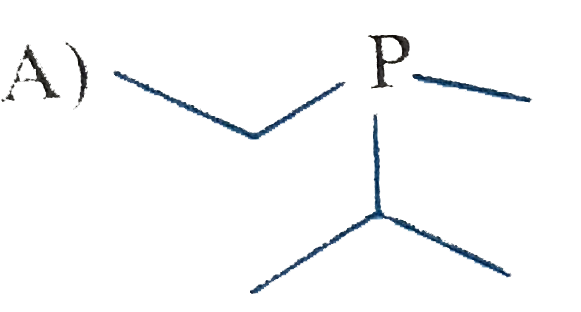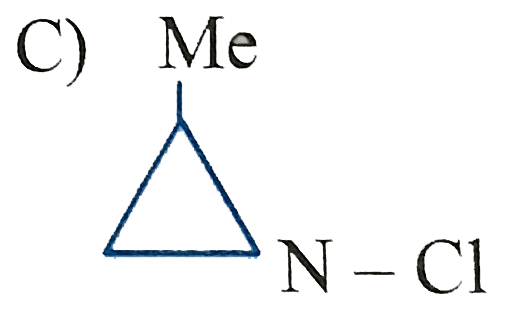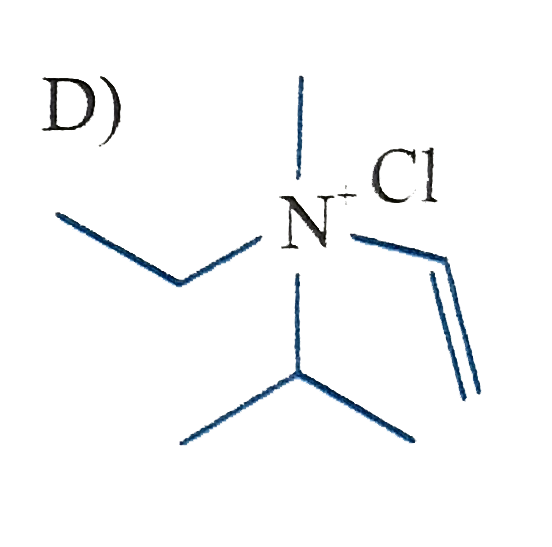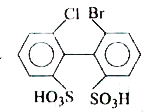Which of the following shows optical isomerism?
Butan-1-ol
Butan-2-ol
Butene
But-2-enol
The correct Answer is:B
To determine which of the given compounds shows optical isomerism, we need to identify if any of the compounds have a chiral center. A chiral center is typically a carbon atom that is bonded to four different groups. Here’s a step-by-step solution:
Step 1: Identify the Compounds
Let's assume we have the following compounds based on the context provided:
1. Butan-1-ol
2. Butan-2-ol
3. Butan-3-ol
4. Butan-2-ene
Step 2: Analyze Each Compound for Chirality
- Butan-1-ol (CH3-CH2-CH2-CH2OH):
- The carbon atoms in this compound do not have four different substituents. The first carbon (C1) has three hydrogens and one hydroxyl group (OH), making it achiral.
- Conclusion: Does not show optical isomerism.
- Butan-2-ol (CH3-CH(OH)-CH2-CH3):
- The second carbon (C2) is bonded to four different groups: a methyl group (CH3), a hydroxyl group (OH), an ethyl group (CH2-CH3), and a hydrogen atom (H).
- Conclusion: This compound has a chiral center and can show optical isomerism.
- Butan-3-ol (CH3-CH2-CH(OH)-CH3):
- The third carbon (C3) is also bonded to four different groups: a hydroxyl group (OH), a methyl group (CH3), an ethyl group (CH2-CH3), and a hydrogen atom (H).
- Conclusion: This compound also has a chiral center and can show optical isomerism.
- Butan-2-ene (CH3-CH=CH-CH3):
- The double bond between C2 and C3 means that these carbons cannot be chiral centers because they do not have four different substituents.
- Conclusion: Does not show optical isomerism.
Step 3: Final Conclusion
From the analysis, Butan-2-ol and Butan-3-ol show optical isomerism due to the presence of chiral centers.
Summary
- Butan-1-ol: No optical isomerism
- Butan-2-ol: Shows optical isomerism
- Butan-3-ol: Shows optical isomerism
- Butan-2-ene: No optical isomerism
Let's assume we have the following compounds based on the context provided:
1. Butan-1-ol
2. Butan-2-ol
3. Butan-3-ol
4. Butan-2-ene
- Butan-1-ol (CH3-CH2-CH2-CH2OH):
- The carbon atoms in this compound do not have four different substituents. The first carbon (C1) has three hydrogens and one hydroxyl group (OH), making it achiral.
- Conclusion: Does not show optical isomerism.
- The second carbon (C2) is bonded to four different groups: a methyl group (CH3), a hydroxyl group (OH), an ethyl group (CH2-CH3), and a hydrogen atom (H).
- Conclusion: This compound has a chiral center and can show optical isomerism.
- The third carbon (C3) is also bonded to four different groups: a hydroxyl group (OH), a methyl group (CH3), an ethyl group (CH2-CH3), and a hydrogen atom (H).
- Conclusion: This compound also has a chiral center and can show optical isomerism.
- The double bond between C2 and C3 means that these carbons cannot be chiral centers because they do not have four different substituents.
- Conclusion: Does not show optical isomerism.
From the analysis, Butan-2-ol and Butan-3-ol show optical isomerism due to the presence of chiral centers.
- Butan-1-ol: No optical isomerism
- Butan-2-ol: Shows optical isomerism
- Butan-3-ol: Shows optical isomerism
- Butan-2-ene: No optical isomerism
Similar Questions
Knowledge Check
- Question 1 - Select One or More
Which of the following show optical isomerism and the isomers can be separated into dextro and laevo forms?
A B
B C
C D
D
- Question 2 - Select One
Which of the following will show optical isomerism?
A B
B C
C D
D
- Question 3 - Select One
Which of the following will show optical isomerism? .
A B
B C
C D
D
Which one of the following will show optical isomerism?
View SolutionWhich one of the following can show optical isomerism ?
View SolutionWhich one of the following can show optical isomerism ?
View SolutionWhich one of the following can show optical isomerism ?
View SolutionWhat of the following can not show optical isomerism?
View Solution

